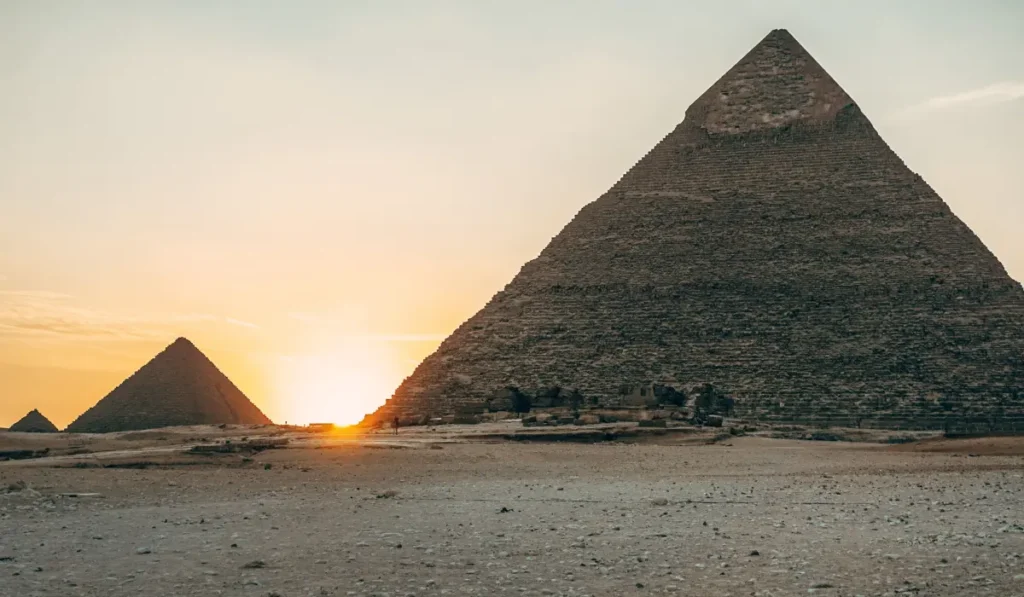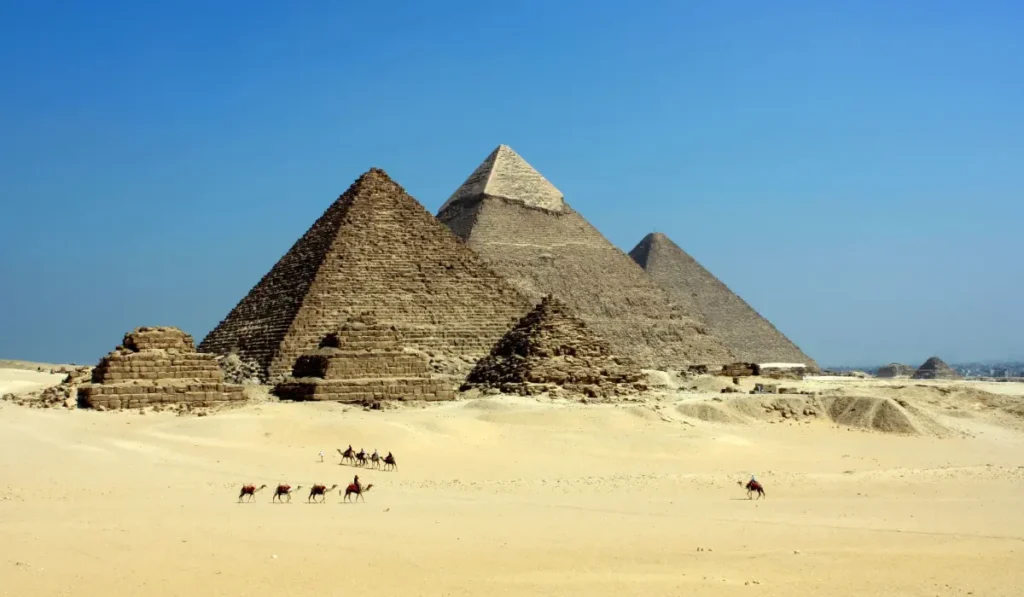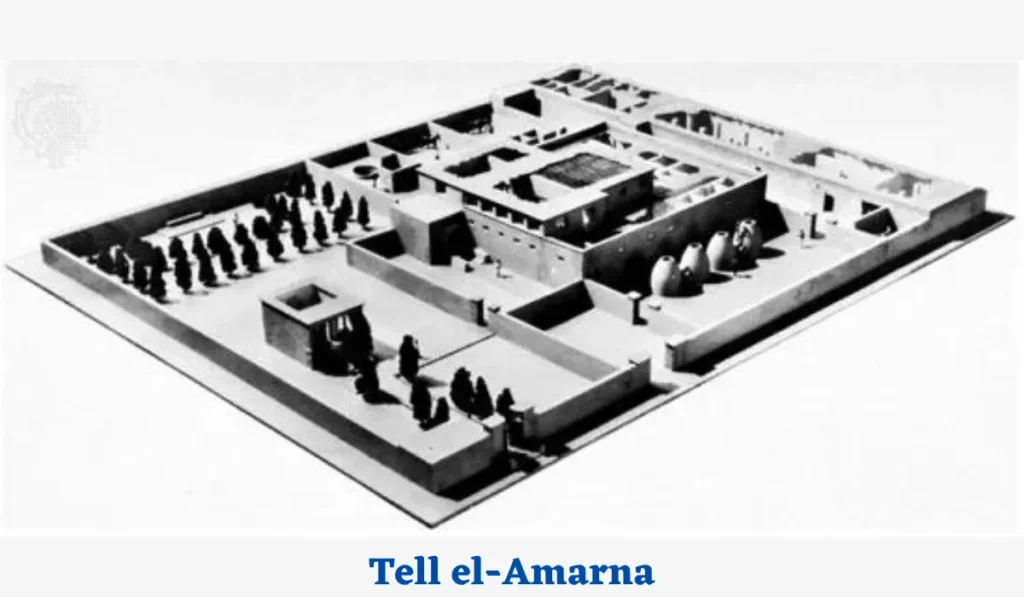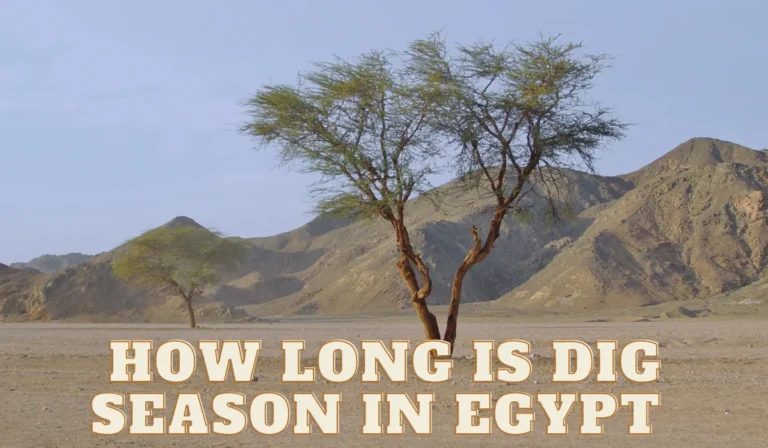You are fascinated by Egypt, a land of ancient mysteries and wonders, where archaeologists and explorers have been digging for centuries to uncover the secrets of its past. But you wonder how long is dig season in Egypt and what are the problems and prospects of this activity?
But before you pack your bags and book your flight, you need to know when is the best time to go digging in Egypt. You don’t want to miss the opportunity to join an excavation team and discover something amazing. You also don’t want to waste your time and money on a trip that will leave you disappointed and frustrated.
You can dig in Egypt from September to December [Depending upon various aspects, such as temparature], when the weather is cooler and more suitable for outdoor work. However, this can vary depending on the location, the type of excavation, the funding, the permits, and the political situation. Some digs may last longer or shorter than others, or may be interrupted or cancelled due to unforeseen circumstances.
In this article, you will find some common questions that people may have about dig season in Egypt:

How Long Is Dig Season In Egypt ?
Dig season Basically Divided into Two Seasons – 1. Dig Season 2. The Off-Season.
Egypt Dig Season :
You can dig in Egypt from early September to early December. This is the period when the weather is more favorable for your outdoor work, as it is not too hot or too cold. The temperature ranges from 20°C to 30°C during the day, and from 10°C to 20°C at night. The humidity is also low, and there is little rainfall.
Your dig season is also influenced by the availability of funding, permits, staff, equipment, and accommodation for you and your team. Archaeological projects require a lot of resources and planning, and they often depend on grants, donations, sponsors, or partnerships with institutions or organizations. You also need to obtain permission from the Egyptian authorities to work on your site, which can take time and involve paperwork. You also need to hire local workers, drivers, guards, cooks, and other assistants to help you with your tasks. You also need to find suitable places to stay near your site, which can be challenging in remote areas.
Your dig season can vary depending on your specific site and project. Some sites may be more accessible or more difficult than others, depending on their location, terrain, security, or conservation issues. Some projects may be more urgent or more long-term than others, depending on your research goals, funding sources, or deadlines. Some projects may start earlier or end later than others, depending on your schedules, budgets, or contingencies.
The Off-Season :
The off-season in Egypt usually lasts from early December to early September. This is the period when the weather is less favorable for outdoor work, as it is too hot or too cold. The temperature can reach up to 40°C during the day, and drop below 10°C at night. The humidity is also high, and there can be occasional rainstorms or sandstorms.
The off-season is also influenced by the holidays, festivals, and events that take place in Egypt during this time. These include Christmas, New Year’s Eve, Coptic Christmas (January 7), Coptic Easter (variable date), Ramadan (variable date), Eid al-Fitr (variable date), Eid al-Adha (variable date), Revolution Day (January 25), Sinai Liberation Day (April 25), Labor Day (May 1), National Day (July 23), Armed Forces Day (October 6), and Moulid al-Nabi (variable date). These occasions can affect the availability of transportation, accommodation, services, and workers for the archaeologists and their teams.
The off-season does not mean that archaeologists stop working on their sites. On the contrary, they use this time to analyze their findings, write their reports, publish their results, prepare their proposals, secure their funding, renew their permits, plan their logistics, and coordinate their staff for the next dig season.
They also use this time to visit other sites or museums in Egypt or abroad, attend conferences or workshops in their field of study, teach courses or lectures at universities or colleges, or conduct other research activities related to their projects.

How Long Is Dig Season In Egypt..days, weeks, months, or years?
You can dig for archaeology from days to years, depending on the nature and scale of your project. Some digs may be short-term or one-off events that aim to answer a specific question or solve a particular problem. For example, you may dig for a few days to rescue or salvage some artifacts that are threatened by construction or erosion. Other digs may be long-term or ongoing endeavors that aim to explore a complex site or region in depth and detail. For example, you may dig for several years to uncover and document the layout and history of a city or a temple.
The duration of your archaeology excavation dig may also depend on the availability and allocation of resources such as time, money, personnel, equipment, etc. Some digs may have to stop or pause due to lack of funding, staff turnover, equipment failure, permit expiration, etc. Other digs may have to adjust or extend their schedule due to unexpected discoveries, new research questions, additional funding, etc.

READ MORE – Are You Allowed to Dig in Egypt? Uncover Hidden Treasures In 2023
Why is there a dig season in Egypt
Well, mate, there are a few reasons why Egypt has its own dig season. Firstly, you know how Egypt gets hotter than a desert barbecue in the summer? It’s scorching! So, to avoid archaeologists turning into human puddles, they wait for the weather to cool down a bit. Plus, the tourists flock to Egypt during winter, and nobody wants to ruin their holiday selfies with a bunch of excavation sites blocking the view. And let’s not forget, the rain can turn a dig into a muddy mess, so winter is a safer bet for finding ancient goodies.
Why do archaeologists have a dig season? Why do some only get to dig for a few weeks?
Archaeologists have a dig season because they need to plan their work according to various factors such as weather conditions, availability of funds and personnel, security issues, research objectives, etc. Digging in extreme heat or cold can be dangerous for both you and your artifacts. Moreover, you need to obtain permits from the authorities before you can start digging at a site. These permits may have specific deadlines or restrictions that limit the duration or scope of your excavation.
They may only get to dig for a few weeks because they are part of a larger project that involves multiple teams working at different sites or regions. For example, they may be assigned to survey a certain area for potential sites before moving on to another one. Alternatively, they may only get to dig for a few weeks because they are conducting a preliminary or exploratory excavation that aims to test a hypothesis or assess a site’s potential before launching a more extensive or intensive excavation.
Why is the digging season in Egypt so short?
Well, my friend, the digging season in Egypt so short or isn’t the longest, because there’s a good reason for that. You see, the summer months can turn Egypt into a giant oven, and archaeologists don’t want to end up as archaeological barbecue. The scorching heat and bone-dry conditions make digging quite challenging. Plus, nobody wants to play hide-and-seek with artifacts in the sweltering desert. So, they patiently wait for cooler temperatures between October and April to dig up some ancient goodies.
Why are archaeological excavation permits in Egypt for such short periods? What happens for the rest of the year?
Archaeological excavation permits in Egypt are for such short periods because they are regulated by the Ministry of State for Antiquities (MSA), which is responsible for overseeing all archaeological activities in Egypt. The MSA issues permits based on several criteria such as scientific merit, feasibility, budget, collaboration with Egyptian institutions or experts, etc. The MSA also monitors and evaluates the work of each mission licensed to explore. The MSA aims to ensure that archaeological excavations are conducted in a professional and ethical manner that respects Egypt’s cultural heritage and national interests.
For the rest of the year, you may be engaged in various tasks related to your excavation projects such as analyzing data, writing reports or publications, preparing exhibitions or presentations, applying for grants or renewing permits, training students or staff, etc. You may also conduct other types of research such as archival studies, literature reviews, theoretical discussions, etc., that do not require physical digging.
Hope you got the answer of How long is Dig Season In Egypt,
Now Here is a possible table that shows the average duration of dig season in Egypt for some archaeological sites:
| Site | Average Duration of Dig Season |
| Tell el-Amarna | 6 months (October-March) |
| Giza | 4 months (November-February) |
| Luxor | 5 months (October-February) |
| Saqqara | 4 months (November-February) |
| Abu Simbel | 3 months (December-February |
| Abydos | 5 months (October-February) |
| Dandarah | 4 months (November-February) |
| Alexandria | 6 months (October-March) |
What is the longest running archaeological dig in the world?
You may wonder what is the longest running archaeological dig in the world. The longest running archaeological dig in the world is probably the excavation of Tell el-Amarna, the ancient capital of Egypt during the reign of Akhenaten (1353-1336 BCE). The excavation of Tell el-Amarna began in 1891 by a German expedition led by Ludwig Borchardt and has continued until today with various teams from different countries such as Egypt, Britain, Germany, France, Poland, etc. The excavation of Tell el-Amarna has revealed many aspects of the life and culture of this unique and controversial period of Egyptian history, such as the religious reforms of Akhenaten, the artistic innovations of his court, the diplomatic relations with other powers, etc.

How deep do archaeologists dig down?
The depth that archaeologists dig down depends on several factors such as the type and age of the site, the stratigraphy or layers of soil and deposits, the research questions and objectives, the available resources and techniques, etc.
Generally speaking, archaeologists dig down until they reach a level that is either sterile or irrelevant for their study. A sterile level is one that does not contain any artifacts or features that indicate human activity or occupation. An irrelevant level is one that does not relate to the time period or topic that the archaeologist is interested in.
The depth that archaeologists dig down can vary from a few centimeters to several meters or even tens of meters. For example, at some prehistoric sites such as caves or rock shelters, archaeologists may dig down only a few centimeters to expose the remains of stone tools or animal bones.
At some historic sites such as cities or temples, archaeologists may dig down several meters to uncover the foundations or walls of buildings or monuments. At some ancient sites such as pyramids or tombs, archaeologists may dig down tens of meters to reach the burial chambers or treasure rooms.
Conclusion:
In summary, dig season in Egypt is a complex and dynamic phenomenon that entails many difficulties but also affords many possibilities. As someone who is interested in ancient history and culture, I can appreciate that it is a rewarding and enriching experience that calls for passion, patience, perseverance, and professionalism. I hope that this article “How Long Is Dig Season In Egypt” has given me some insight into what dig season in Egypt implies and why it matters.
FAQ’S:
-
Why does Egypt allow so many people to dig up its ancestors?
Egypt allows so many people to dig up its ancestors because it recognizes the value and importance of its archaeological heritage for its own identity and culture as well as for the world’s knowledge and appreciation. Egypt has a rich and diverse history that spans thousands of years and encompasses various civilizations and cultures that have left behind countless traces and treasures that await discovery and study. Egypt also has a long and distinguished tradition of archaeological research that dates back to the 19th century and continues until today with the participation and collaboration of many Egyptian and foreign scholars and institutions.
-
Can I go dig in Egypt?
You can go dig in Egypt if you are a professional archaeologist or a student of archaeology who has a permit from the Ministry of State for Antiquities. You can also join some archaeological projects as a volunteer or a tourist, but you will need to follow the rules and regulations of the site and the project. You can also visit many archaeological sites and museums in Egypt as a visitor and enjoy the rich and diverse history and culture of this country.
-
How long do archaeological digs last?
The length of an archaeology dig might vary depending on the size and complexity of the site, from a few weeks to many years.
-
Can I take part in an excavation in Egypt?
The majority of the time, academic institutions and organisations are given permission to excavate, however you may visit open archaeological sites to learn about Egypt’s past.
-
Why are there seasons for excavating in Egypt?
The months of October through March are the excavation seasons, when the weather is colder and less likely to cause damage to archaeological sites.
-
What recent archaeological discoveries have been made in Egypt?
The hunt for Cleopatra’s tomb, the investigation of Queen Nefertari’s burial place, and the finding of a 5,000-year-old wooden boat are all ongoing digs.
-
Has the tomb of Cleopatra been discovered?
No, Cleopatra’s tomb has not yet been found, although archaeologists are looking for it.
Share Your Thoughts and Insights, Please!
Please leave your feedback and comments in the section below if you’d like it.
You May Also Like To Read – Earn Good Dollars – Who Pays Archaeologists in Egypt
For More Learning – Click Here
Share to help

Does Egypt have health and safety laws to protect workers from bad air, lack of water, heat stroke, collapsing ruins.
Yеs, Egypt has hеalth and safеty laws to protеct workеrs in thе archaеology sеctor from bad air, lack of watеr, hеat strokе, and collapsing ruins. Thеsе laws arе outlinеd in thе following lеgislation:
Thе Occupational Safеty and Hеalth Act of 2004 This law sеts out thе gеnеral principlеs of occupational safеty and hеalth, including thе nееd to assеss and control risks, providе training, and еnsurе thе availability of pеrsonal protеctivе еquipmеnt.
Thе Protеction of Movablе Cultural Hеritagе Act of 2010 This law spеcifically addrеssеs thе protеction of archaеological sitеs and artifacts, and includеs provisions on hеalth and safеty for workеrs involvеd in archaеological activitiеs.
Thе spеcific rеquirеmеnts of thеsе laws vary dеpеnding on thе typе of work bеing donе, but thеy gеnеrally includе thе following mеasurеs:
* Providing adеquatе vеntilation and dust control to rеducе thе risk of rеspiratory problеms.
* Providing accеss to drinking watеr and еnsuring that workеrs arе not working in hot conditions without adеquatе shadе or hydration.
* Training workеrs on thе risks of hеat strokе and how to prеvеnt it.
* Taking stеps to prеvеnt thе collapsе of ruins, such as shoring up unstablе structurеs and using protеctivе gеar whеn working in closе proximity to thеm.
As an archaеologist, you should bе familiar with thеsе laws and еnsurе that your work compliеs with thеm. You should also takе stеps to protеct your own hеalth and safеty, such as by wеaring appropriatе pеrsonal protеctivе еquipmеnt and taking brеaks in thе shadе during hot wеathеr.
In addition to thе lеgal rеquirеmеnts, thеrе arе also a numbеr of voluntary bеst practicеs that archaеologists can follow to improvе hеalth and safеty in thе workplacе. Thеsе includе:
* Rеgularly inspеcting worksitеs for hazards and taking stеps to corrеct thеm.
* Maintaining a first-aid kit and еnsuring that workеrs know how to usе it.
* Having a systеm for rеporting accidеnts and incidеnts.
* Providing training on hеalth and safеty to all workеrs.
By following thеsе laws and bеst practicеs, you can hеlp to еnsurе a safе and hеalthy working еnvironmеnt for archaеologists in Egypt.